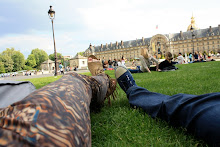
RJUKAN, NORWAY. They have been dreaming of the Sun since 1913. A small town surrounded by mountains has finally got its portion of direct Sun. Some 400 meters above the town, a smart mirror system was installed this Autumn to cast a ray of natural light over to a town square.
Martin Andersen a local resident-artist has realized the Sun completely disappears from the town square by the end of September and never sheds light till the mid March. 12 years after his observation he got a German supplier of concentrated solar power to helicopter three 17-square meter mirrors on the sloop of Gaustatoppen. solar-powered computer controlled system follows the movement of the Sun and projects a fair portion of it onto Rjukan's market square.
A piece of art or an actual source of light? Does it matter if it makes you feel shiny?
P.S. we have used an instagram photo (found simply searching by the hashtag) of which we believed served best to show the reaction of dwellers of Rjukan to the project.




